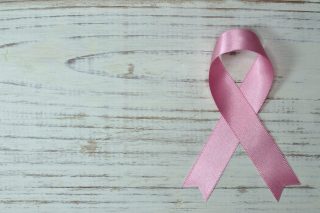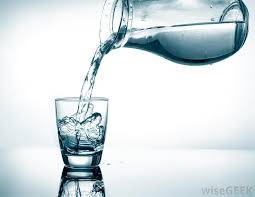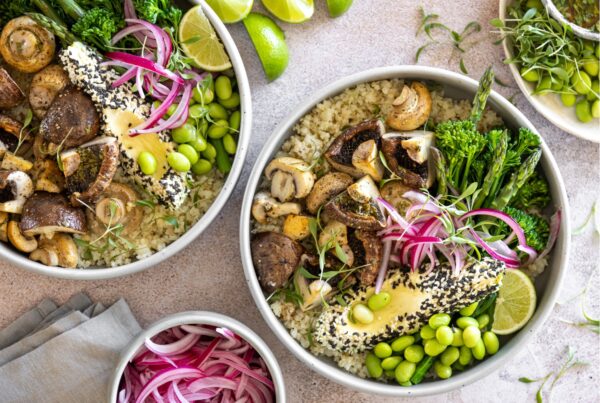Cancer affects a patient’s appetite, leading to reduced food intake(1). In some cases, tumors tend to induce anorexia in cancer patients(2).
Cancer treatments, like surgical procedures, chemotherapy, and interventional radiology procedures, also cause side effects that may affect a patient’s food consumption(3).
Maintaining a healthy diet is a necessary step to feeling better during cancer treatments.
Choosing A Healthy Diet During Cancer Treatments
Cancer patients need to stay strong during their treatment. A consultation with an oncologist or nutritionist is important in knowing how to prevent malnutrition.
If you are a cancer patient undergoing therapy, these tips can help you maintain a nutritious diet:
Eat whole grains
Consuming breads and cereals with whole grains helps cancer patients include fiber in their system. Whole grains are fundamental and vital sources of bioactive phytochemicals, like dietary fibers. These bioactive compounds have essential roles in managing each stage of cancer formation (carcinogenesis)(4). 
Eat and drink more fruit and vegetable juices
Juice drinks can provide your body with essential nutrients, such as iron, potassium, magnesium, vitamin B, and vitamin C.
Because cancer patients are more susceptible to infection(5), make sure you consume only pasteurized or heat-treated juices(6). Unpasteurized beverages can contain bacteria that may worsen your condition.
Try incorporating vegetarian meal options into your diet. Studies have noted that substituting red meat with high-fiber alternatives may reduce cancer risk(7).
Choose lean meat over red meat
Cancer patients need an adequate amount of protein during all cancer treatment stages, including recovery and long-term survival(8).
Protein foods that are low in fat include;
- lean meats
- poultry products
- fish meat
- low-fat dairy products
- legumes
- nuts, and seeds.
Consuming more of these foods provides cardio-protective benefits and reduces calories(9).
Although both lean and red meat contains high levels of B vitamins, red meat contains higher levels of fat.
Avoid sugary foods and drinks
Excessive consumption of sugary foods and drinks has been linked to increased cancer risk(10).

Photo by Sarah Takforyan on Unsplash
High sugar intake promotes insulin-glucose dysregulation, which affects blood sugar stability(11).
Consuming too much sugar may also lead to oxidative stress and inflammation. These conditions are associated with cancer(12).
Eating Without an Appetite
Appetite loss is a common side effect of cancer treatment(13). For this reason, it is crucial for cancer patients undergoing therapy to consume enough nutrients.
The following tips can help boost appetite during cancer treatment:
Schedule your meals.
You may not necessarily feel hungry because cancer therapies can decrease appetite. Still, it is often helpful to eat according to a schedule rather than having to rely on your appetite.
Try to create a pleasant atmosphere during mealtime.
Soft music, scented candles, flowers, or decorative dishes can help liven up your mood.
Garnish your dishes.
Make your meals appear more appetizing with colorful garnishes, like lemon slices, parsley, and cherry tomatoes.
Visual presentation of food can positively influence an individual’s eating behavior(14).
Treating Symptoms
Common symptoms of cancer and cancer therapies include anorexia, nausea, vomiting, dry mouth, and mouth sores(15). 
These tips may help you ease common symptoms while maintaining a healthy diet during cancer treatments.
Keep healthy snacks close.
Cancer patients with anorexia may benefit from eating smaller meals throughout the day and larger meals when they feel well-rested(16).
If you do not feel like consuming solid foods, try nutrient-rich drinks, like fruit juices or smoothies.
Having smaller meals instead of large meals may help control vomiting(17).
Eat dry foods in the morning.
If you feel nauseated in the morning, try eating dry toast or crackers to help improve your appetite for the day(18).
Bland foods are easier to digest than heavy meals. Forcing yourself to eat heavy meals may trigger nausea and make you sick(19).
Other foods that are easy on the stomach include white toast, clear broth, and plain yogurt.
Sip water throughout the day.
 Cancer patients who suffer from vomiting during treatment are advised to drink small amounts of clear liquid once vomiting stops(20).
Cancer patients who suffer from vomiting during treatment are advised to drink small amounts of clear liquid once vomiting stops(20).
Drinking water may help with dry mouth. However, avoid drinking liquor and using tobacco products because they can worsen dry mouth(21).
Sour products, like lemonade, increase saliva secretion and help with dry mouth symptoms(22).
Consuming tart or sour foods and drinks may also help if you are experiencing taste changes(23). Cancer tends to alter taste perception(24).
Eat soft foods.
Cutting food into bite-sized pieces may help with mouth sores(25). Foods in smaller pieces are easier to chew, so you can avoid hurting your mouth.
Sucking on ice chips and eating cold foods may also help soothe mouth sores. Meanwhile, hot foods can make eating painful(26).
Malnutrition in Cancer Patients
Dr. Veronica McLymont, a registered dietitian and certified dietitian-nutritionist, authored a cancer rehabilitation book highlighting cancer patients’ nutrition care(27).
Dr. McLymont emphasized nutrition as an integral component in managing cancer patients. Nutrition screening and assessment of cancer patients are necessary to identify those at risk for malnutrition.
Low nutritional status may lead to a decreased quality of life. Functional status and response to therapy may also be affected when patients have poor dietary habits.
It is important that you consult your oncologist and dietitian to develop a diet plan that works for you during cancer treatment.
References
-
McLymont, V., Cox, S., & Stell, F. (2003). Improving patient meal satisfaction with room service meal delivery. Journal of nursing care quality, 18(1), 27–37. https://doi.org/10.1097/00001786-200301000-00005
-
Ezeoke, C. C., & Morley, J. E. (2015). Pathophysiology of anorexia in the cancer cachexia syndrome. Journal of cachexia, sarcopenia and muscle, 6(4), 287–302. https://doi.org/10.1002/jcsm.12059
-
McLymont, V., Cox, S., & Stell, F., (2003) Op Cit
-
Xie, M., Liu, J., Tsao, R., Wang, Z., Sun, B., & Wang, J. (2019). Whole Grain Consumption for the Prevention and Treatment of Breast Cancer. Nutrients, 11(8), 1769. https://doi.org/10.3390/nu11081769
-
Why People with Cancer Are More Likely to Get Infections. American Cancer Society. Retrieved from https://www.cancer.org/treatment/treatments-and-side-effects/physical-side-effects/low-blood-counts/infections/why-people-with-cancer-are-at-risk.html
-
What You Need to Know About Juice Safety. U.S. Food & Drug Administration. 2017 October 30. Retrieved from https://www.fda.gov/food/buy-store-serve-safe-food/what-you-need-know-about-juice-safety#:~:text=Most%20of%20the%20juice%20sold,processes%20for%20the%20same%20purpose.
-
Donaldson M. S. (2004). Nutrition and cancer: a review of the evidence for an anti-cancer diet. Nutrition journal, 3, 19. https://doi.org/10.1186/1475-2891-3-19
-
Doyle C, Kushi LH, Byers T, et al. Nutrition and physical activity during and after cancer treatment: an American Cancer Society guide for informed choices. CA Cancer J Clin. 2006;56(6):323–353.
-
Barrera, S., & Demark-Wahnefried, W. (2009). Nutrition during and after cancer therapy. Oncology (Williston Park, N.Y.), 23(2 Suppl Nurse Ed), 15–21.
-
Makarem, N., Bandera, E. V., Nicholson, J. M., & Parekh, N. (2018). Consumption of Sugars, Sugary Foods, and Sugary Beverages in Relation to Cancer Risk: A Systematic Review of Longitudinal Studies. Annual review of nutrition, 38, 17–39. https://doi.org/10.1146/annurev-nutr-082117-051805
-
Ibid
-
Reuter, S., Gupta, S. C., Chaturvedi, M. M., & Aggarwal, B. B. (2010). Oxidative stress, inflammation, and cancer: how are they linked?. Free radical biology & medicine, 49(11), 1603–1616. https://doi.org/10.1016/j.freeradbiomed.2010.09.006
-
McLymont, V., Cox, S., & Stell, F., (2003) Op Cit
-
Burger, K. S., Cornier, M. A., Ingebrigtsen, J., & Johnson, S. L. (2011). Assessing food appeal and desire to eat: the effects of portion size & energy density. The international journal of behavioral nutrition and physical activity, 8, 101. https://doi.org/10.1186/1479-5868-8-101
-
PDQ Supportive and Palliative Care Editorial Board. Nutrition in Cancer Care (PDQ®): Patient Version. 2018 Mar 16. In: PDQ Cancer Information Summaries [Internet]. Bethesda (MD): National Cancer Institute (US); 2002-. Available from: https://www.ncbi.nlm.nih.gov/books/NBK66004/
- – 21. Ibid



![women [longevity live]](https://longevitylive.com/wp-content/uploads/2020/01/photo-of-women-walking-down-the-street-1116984-100x100.jpg)










